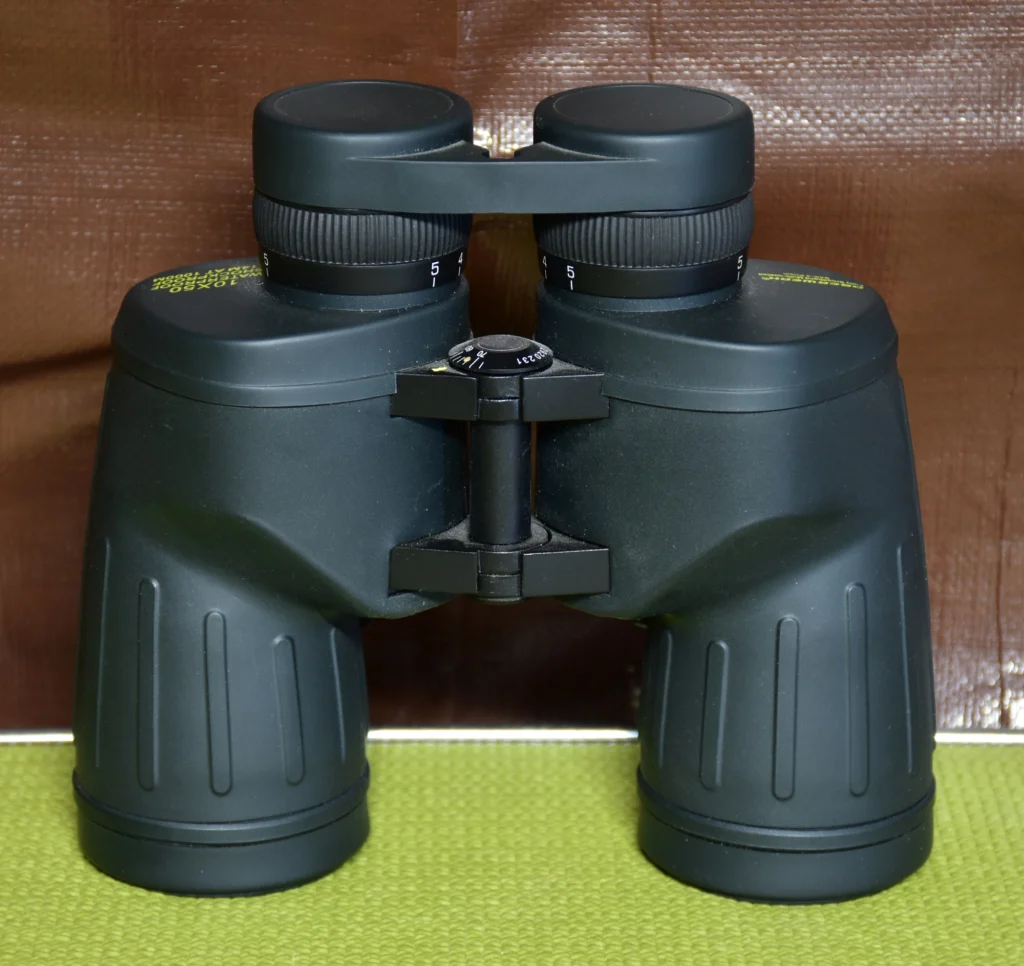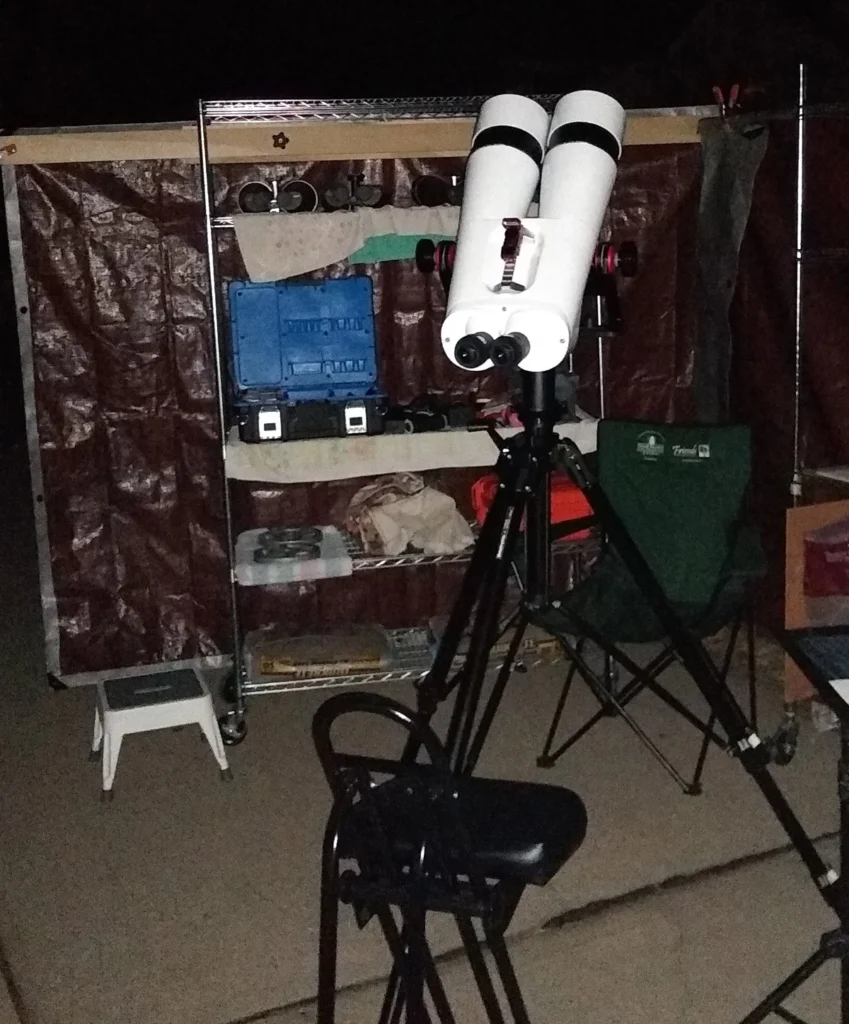In astronomy “first light” means the first views one has with a new instrument. That is the first celestial light – the first stars one sees; the first starfields; the first deep sky objects. Here is the first light post for my new astronomy blog.
ExploreTheNightSky is devoted to astronomy with binoculars. Why? What is so alluring and fascinating about binocular astronomy? The simple answer is that binoculars are an immediate and intimate way to explore the night sky. One views with both eyes, and what one sees is not upside down or mirror-reversed as it is with astronomical telescopes. It is natural and intuitive. Binoculars are ideal for studying constellations, for roaming star fields, for experiencing the sky in its entirety because it is easy to switch between naked eye and binocular views. You can easily see where you are. This is surprisingly and strikingly untrue for telescopic astronomy, and why so many goto telescopes are sold and so many observers who use them are only vaguely familiar with the night sky.

Binoculars are also powerful tools for observing, despite their ease of use. Significantly more stars can be seen with even modest sized binoculars compared with unaided vision. How many more? A hand held 10×50 binocular, under suburban light polluted skies, can reach stars of 7.5 magnitude, fainter than what can be seen naked eye from the darkest sky site. Naked eye limiting magnitude is typically said to be around 6.5 at the darkest sites for sharp eyed observers, which amounts to about 4,500 stars from a given location. Without leaving your own yard (assuming a typical suburban location where 4.0 magnitude stars can be seen naked eye) with a binocular you can see around 22,500 stars based on the 7.5 magnitude estimate. With the same binocular mounted on a tripod you can expect to see at least 1 magnitude fainter, or stars down to 8.5 magnitude, which increases the total observable star count to over 63,000 stars (the stellar magnitude scale is logarithmic). With that same binocular at a dark sky site 130,000 stars could be seen. Something to keep in mind for your next camping trip.
Really, the most significant challenge with binocular astronomy is just keeping track of all that can be seen. But, it’s a nice problem to have if you enjoy viewing the night sky and want to do so from your own yard (with occasional trips to dark sky sites).
My goal is to make this blog appealing and fun to anyone interested in binocular astronomy. Star Guide posts will guide observers through star fields to locate and enjoy the deep sky objects they contain. Star Log posts will include notes and reports of observing sessions from my suburban yard and from the dark sky sites I visit. Equipment posts will provide detailed information about a wide variety of binoculars. Since ordering the Oberwerk 10×50 Ultra, my binocular collection has grown to over 40 instruments, including a range of binoculars from modest-sized, value-priced instruments to large, premium binocular telescopes costing thousands of dollars. Detailed information will also be provided about binocular mounts, the types of mounts available, and how to use them effectively to see more and enhance your observing experience. Cosmos posts will include everything else. (Cosmos sounds cooler than Miscellaneous. 😉)
If you enjoy this blog, please subscribe to email notifications for new posts (email signup coming soon 😁) – your email address will not be shared with others or sold to businesses or organizations, and you will be able to unsubscribe at any time. Please comment on posts you like, ask questions, or make suggestions. If you maintain an astronomy blog or website, send me a message about it (again, coming soon, sigh… 😏). An online resource page will be added in the near future, including astronomy sites maintained by other observers (even if they use telescopes).
Oberwerk 127XL First Light Observations
Here are some first light observations made with my Oberwerk 127XL-SD binocular telescope on Sunday 2 October 2022 from my suburban driveway.
It was a wonderful observing session. What is immediately noticeable with the 127XL is the bright, sharp, and deep star fields. That is the magic for me with a larger binocular telescope – a benefit that can be enjoyed from my suburban home as well as from darker sites (because stars are less affected by light pollution than extended low surface brightness objects), and my motivation for adding a larger aperture instrument to my collection. It’s really fun to see so many stars in the field of view.
M71
A difficult binocular object for suburban skies, but bright and easily seen with the 127XL (Pentax 20mm XW eyepieces – 32.5x). No stars resolved.
M27
Remarkably bright. Double lobed shape apparent.
NGC 7789
From my yard I’ve been able to see this rich but fainter cluster in averted vision as a large nebulous shape with a sprinkling of stars glimmering at the edge of resolution. With the 127XL a fair number of cluster members are resolved and the appearance of the cluster is more pleasing.
M52
This open cluster is impressive viewed with the 127XL. From my yard with other binoculars it typically presents as a nebulous glow in averted vision with a few stars resolved, but with the 127XL many cluster members are resolved for a richer view. From a darker site it will be glorious without a doubt (as will NGC 7789).
Perseus Double Cluster
The best view of the Double Cluster I have had from my yard with any instrument I own. Enchanting and mesmerizing. One of the best views in the sky for a binocular telescope.
M76
Though M76 is easily seen from darker sites with modest binoculars, it is challenging to observe with binoculars from suburban, light polluted skies. Seen as a vague nebulous patch, which I can hold steadily in direct vision thanks to the 127XL aperture. I cannot make out the lobed, peanut like shape. This may be my first sighting of M 76 with binoculars from my yard.



Good work Fiske. Let us know when we can sign up.
Starting off the blog with First Light of the 127XL-SD… Nice!!
I’ve got the 100XL-EDs on a “long-term wishlist”. Short-term I was able to finally find a used 25x100mm that needed conditional alignment and as such got sold cheap. They’re not the best by any means but are still able to give me that sense of awe when looking through them. I can only imagine how the 127XL-SD would knock my socks off!!
Clear skies,
– AstroApe –